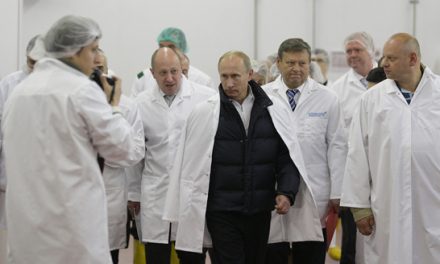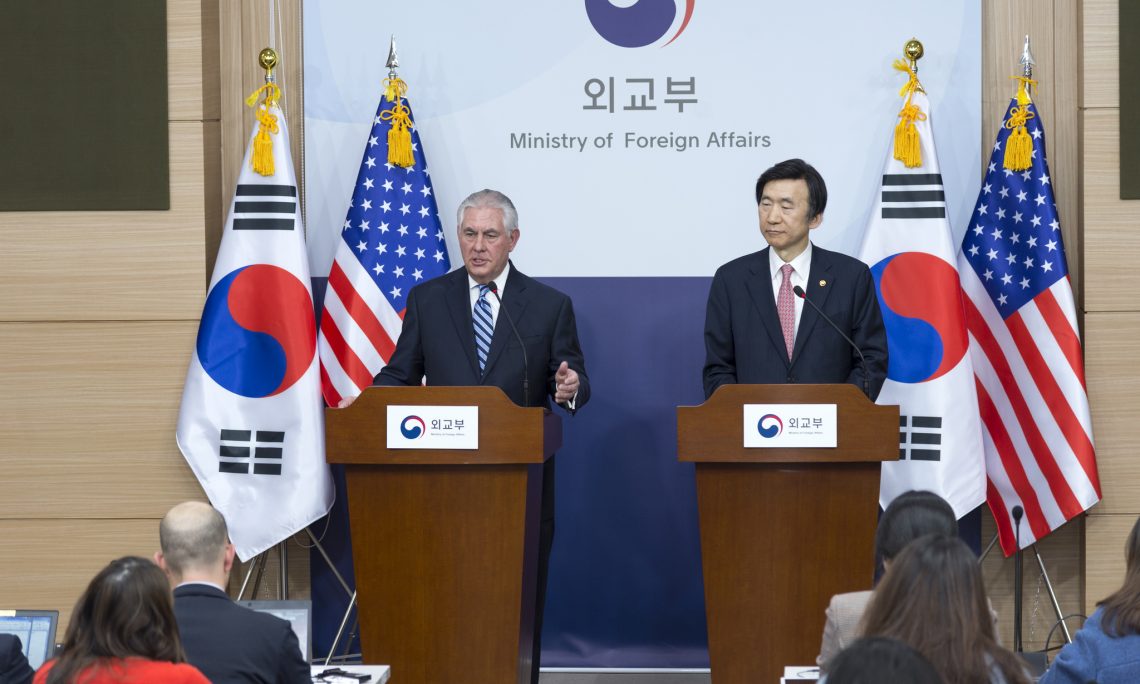By: Chaney Taggart*
Our newfound optimism regarding U.S.-Cuban relations has abruptly come to an end, and this time President Trump’s tweets are not at the center of attention. The U.S. embassy in Havana, Cuba reopened in 2015 during President Obama’s impressive campaign to reinstate diplomatic relations with the small island state, which may now be soured by recent accusations regarding a series of incidents involving the health of U.S. officials in Cuba.[1] In the past year, the diplomats have apparently fallen victim to a directed-energy weapon that permanently changed their brains, creating furor over the enigmatic technology and unknown perpetrators.
Beginning in November 2016, shortly after election day and continuing through August 2017, 24 U.S. diplomats stationed at the embassy and some other American and Canadian visitors experienced a diverse body of symptoms that resulted in permanent hearing loss and brain damage, triggering a travel warning in September 2017.[2] U.S. diplomats experienced ear-ringing, nausea, severe headaches, memory loss, lack of balance and concentration, felt vibrations, heard chirping noises and sounds that were only audible in certain parts of the room, and sustained concussions and damage to their central nervous systems while inside their homes and hotel rooms, among other symptoms.[3] This event, dubbed “health attacks” by U.S. Secretary of State Rex Tillerson, brings back memories of the Cold War, lest we forget the Bay of Pigs and Cuban Missile Crisis.[4] U.S. relations with Cuba have been strained since the end of World War II, which also marked the beginning of a new era of intelligence and warfare that expands far beyond the use of guns and bombs.
The Associated Press first broke the story on August 10, 2017, informed by anonymous sources that the Cuban government may have used a covert device to attack the officials.[5] While the tension between the parties involved may not be a new development, I sense a relationship between these attacks and the changes that coincided with rise of asymmetric warfare following 9/11. The Cold War atmosphere of this event may be integrated with the future of warfare as weapons and tactics diversify to contain – or take advantage of – situations in which perpetrators and organized groups are not easily identified and differentiated. Imagine if Cuba chose to simply assassinate American officials. A covert attack like this, on other hand, sends a message while granting Cuba the protection of plausible deniability. How often covert attacks like this occur between nations might be unknowably lost in the sea of classification and secrets, but I propose that this is only one minor occurrence in what will eventually be familiar and accepted in both covert and overt warfare, warranting examination of the implications of these weapons in society and international relations.
The U.S. initially responded by expelling two Cuban diplomats on May 23, which the Cuban Foreign Ministry claimed was “unjustified and baseless.”[6] Fifteen other Cuban officials have since been expelled and 60% of U.S. embassy personnel withdrawn, stating Cuba’s failure to protect diplomats under international law, much to Cuba’s disgrace.[7] Undercover U.S. intelligence agents – spies – were among the first to be targeted and incurred some of the most acute damage, which may have been intentional.[8] President Trump accused Cuba of being responsible for the attack on October 16, and one former intelligence official says the leading theory holds Cuban intelligence responsible.[9] In addition to Cuba’s repeated denials of involvement, the strong and long-term alliance between Cuba and Russia makes many officials suspect that Russia participated. U.S. officials are also entertaining the possibility of the culprit being rogue Cuban spies attempting to disrupt the new diplomatic relations between the two states, which could indicate an embarrassing lack of control by Cuban President Castro. The State Department is publicly leading the investigation, issuing extensive searches through classified information from as far back as the 60’s, contacting former intelligence officers, and drawing from experts across agencies and offices.[10]
Major policy changes include many new travel restrictions that went into effect on November 9. These restrictions include 180 entities with intent to ward off travelers and businesses.[11] Despite this retaliation, the Cuban Minister of Foreign Affairs reiterates Cuba’s claim: “The Cuban government has no responsibility whatsoever in these incidents which are said to have affected the U.S. diplomats,” referring to the accusations as “deliberate lies.”[12] Even though the U.S. government is still unsure of who is responsible and of what would motivate them to upset a newfound relationship, the travel warning and restrictions could seriously damage Cuba’s burgeoning tourism economy.
U.S. relations with Cuba may be in jeopardy, but they aren’t the only issue worthy of discussion. The weapon that was used may have implications for international relations everywhere, signaling new warfare methods. Aside from the mysterious allure, the weapon illustrates some of the problems that ensue from the development and use of unconventional weapons in the international landscape. Two U.S. intelligence officials told POLITCO that the device is most likely directed-energy or sonic in nature and is reminiscent of another device that the Soviets used in Havana over 40 years during the Cold War.[13] The reports of vibrations and selectively audible sounds led experts to initially suspect that the weapon was sonic in nature, but news sources are increasingly acknowledging other possibilities such as electromagnetic weapons as more information is exposed about symptoms that are unlikely to be explained by sound waves.[14] While ultrasonic (above audible frequencies) and infrasound (below audible frequencies) are capable of inflicting bodily harm and inducing many of the reported symptoms, neither can account for everything the officials suffered, nor are they easily or likely to be harnessed in a remote, directed-energy weapon.[15]
Electromagnetic energy, on the other hand, can not only explain all the symptoms, it is easily pinpointed and can travel through walls.[16] Given that the entire nervous system is run electrically, EMF has the potential to manipulate all human sensations and bodily functions. Whether it is sonic, electromagnetic, or something else, the U.S. is likely dealing with some form of directed-energy, kinetic weapon. Directed-energy weapons assume many diverse forms, with targets ranging from enemy equipment to human beings, and from single individuals to entire cities. Unlike traditional weapons, these are generally for purposes other than direct killing. While much of the U.S. is preoccupied with North Korean missile and nuclear capabilities, for example, high-energy electromagnetic pulse weapons – designed to disrupt or damage electronic equipment and power grids on potentially massive scales via missile or satellite – are also an area of concern.[17] On a much smaller scale, the U.S. Navy’s silent and invisible “drone-killing laser” gained media attention just this past summer; it destroys with more precision than a gun.[18] Returning to the biological element, in 2012 there was drama over the Russian “Zombie Gun” boasted by Vladimir Putin, designed to incapacitate or “zombify” targets with radiation.[19]
The U.S. Department of Defense’s Non-Lethal Weapons Program sponsors many other similar devices, one example being “Active Denial Systems,” which use radio waves to burn skin and inflict pain. They were deployed in Afghanistan for area denial and crowd control purposes and are now being used by domestic police forces.[20] The list is endless. All types and frequencies of kinetic energy have been examined in the name of defense. Even brainwaves are now considered for offensive intelligence-gathering and protection from foreign intelligence as SIGINT advances.[21] The diversity and complexity of these weapons raises questions regarding their position under international law. Devices like the one used in Cuba complicates the laws and ethics of international force. “Unarmed” and nondeadly warfare is currently in purgatory, withstanding many of the traditional rules of war. Situations like that of the Cuban embassy result.
To those unfamiliar with electronic warfare, the possibility of an invisible electromagnetic weapon may be unnerving, bizarre, and shocking. The technology described in the former paragraph may seem so advanced that it appears to be entirely recent. However, the weaponization of electromagnetic energy goes back long before the age of terrorism, having been carried out throughout the Cold War and leading up to the production of modern day lasers and cutting-edge missile defense. One notable event in history that has piqued the interest of U.S. officials involved in the Cuban investigation is the time the Soviet government microwaved the U.S. embassy in Moscow for 25 years, significantly exceeding the maximum exposure standards before public interest arose in 1972, demanding the immediate removal of all U.S. personnel and inciting an onslaught of lawsuits against the U.S. government.[22] The U.S. government was not only aware it was happening and did nothing – it saw it as an opportunity to study the effects of non-ionizing radiation. There was concern over the intentions of the Soviets and what they knew about radiation. The CIA suggested that they were attempting to manipulate the behavior or mental state of U.S. officials, perhaps even control their minds. The State Department assigned DARPA the task of research, which sent medical workers to draw blood from the diplomats under a cover story, giving birth to DARPA Program Plan 562, or Project Pandora, the forgotten chapter of Cold War research that aimed to understand the neurological effects of microwaves.[23] While mind control was eliminated as the purpose of the Soviet microwave beam, it did not stop the Pentagon and intelligence agencies from orchestrating experiments to test it and its weapons applications, following the tradition of unethical defense projects of dubious scientific merit like MKULTRA. U.S. officials are undoubtedly raking through this heap of research now to understand what happened in Cuba. Not only is the research potentially relevant, the story of the so-called “Moscow Signal” is being compared to the situation in Havana by many journalists. It’s hard to resist noticing the similarities when so few stories like these are available to the public. Once again, a Cold War adversary is using covert, nonlethal technology on U.S. diplomats within their own embassy and their intentions are also, once again, muddled.
So, there is some apparent history behind this story. But what about the future? Future U.S.-Cuban relations are subject to change in any direction, now more than ever. Much will depend on the results of the ongoing investigation that will determine where blame falls. Even if diplomatic relations prevail, the scar will remain. But beyond a 21st-century Cold War, this kind of violence may not be considered rare for much longer. Aside from the familiar systems that disable enemy weapons during conventional warfare, such as electronic jamming devices, there is a tendency to assume lethality of wartime weapons, as guns and bombs capture attention. However, the landscape of war is changing rapidly, and the development of more diverse methods, such as kinetic, directed-energy, and nonlethal weapons will play a more prominent role as more focus is applied to asymmetric and unconventional warfare, counterinsurgency, and peacekeeping.[24] It can likely be assumed that these devices will consume a greater proportion of U.S. funding than in previous decades, although that funding is and will continue to be hidden behind the Pentagon’s black budget. Army veteran and affiliate of Los Alamos National Laboratory, John B. Alexander has been a leading advocate for nonlethal weapons for decades, asserting their pragmatic use in operations involving civilians, from peacekeeping to the suppression of terrorist groups.[25] Nonlethal weapons are boasted to be the middle ground between talking and killing, but they should not to be mistaken for a movement for peace and nonviolence. They are weapons, and they are a use of force. Steven Aftergood, a political activist and director of the Federation of American Scientists Project on Government Secrecy, asserts that “the idea of ‘non-lethal weapons’ is politically attractive and purposefully misleading.”[26] Many such devices could be likened to torture, and as seen by the effects on U.S. officials, can leave permanent damage.
The continuity between Cold War technology and the future of warfare is interesting. Despite the U.S. government’s claims that these attacks are a mystery, I find it extremely unlikely that any kind of sonic or electromagnetic device is too advanced or too mysterious for our government to fully understand. You may be tempted to craft yourself a tin foil hat or dismiss the story as “fake news,” but kinetic energy is as viable as a weapon as its chemical and nuclear counterparts. It is weird, unfortunate, and scary, but weapons like this are a reality, and they are very advanced. The real mystery faced by the U.S., if there is one, is who the perpetrator is and what their motivation is. U.S. relations with Cuba have only been getting worse and may never recover. Only time will tell, or the public may never know. No matter the outcome, nations must begin to consider what this kind of technology means for international law and warfare since scientific advancements will only continue to interact with weapon developments.
[1] Lee, Matthew, and Michael Weissenstein. 2017. Hearing loss of US diplomats in Cuba blamed on covert device. August 10. https://www.apnews.com/51828908c6c84d78a29e833d0aae10aa.
[2] Watkins.
[3] Lee, Matthew, and Michael Weissenstein. 2017. Hearing loss of US diplomats in Cuba blamed on covert device. August 10. https://www.apnews.com/51828908c6c84d78a29e833d0aae10aa; Oppmann, Patrick, and Elise Labott. 2017. Sonic attacks in Cuba hit more diplomats than earlier reported, officials say. August 20. http://www.cnn.com/2017/08/20/politics/havana-sonic-attacks/index.html; Harris, Gardiner, and Adam Goldman. 2017. Illnesses at U.S. Embassy in Havana Prompt Evacuation of More Diplomats. September 29. https://www.nytimes.com/2017/09/29/us/politics/us-embassy-cuba-attacks.html.
[4] Lee, Matthew, and Michael Weissenstein. 2017. Tillerson says diplomats in Havana suffered ‘health attacks’. August 12. https://www.apnews.com/4f71fd3a38f24b60bd131c342483b167; Watkins, Ali. 2017. Cuba attack mystery may be Cold War flashback, officials say. November 12. https://www.politico.com/story/2017/11/12/cuba-attacks-cold-war-technology-244787.
[5] Lee, Matthew, and Michael Weissenstein. Hearing loss.
[6] Ibid.
[7] Oppmann, Patrick, and Elise Labott. 2017. State Department orders nonessential diplomats and families out of Cuba following mysterious attacks. September 29. http://www.cnn.com/2017/09/29/politics/us-cuba-sonic-attacks-pulls-out-diplomats/index.html; Harris, Gardiner, Julie Hirschfeld Davis, and Ernesto Londono. 2017. U.S. Expels 15 Cuban Diplomats, in Latest Sign Détente May Be Ending. October 3. https://www.nytimes.com/2017/10/03/world/americas/us-cuba-diplomats.html.
[8] Lee, Matthew, Michael Weissenstein, and Josh Lederman. 2017. AP sources: US spies in Havana hit by bizarre health attacks. October 2017. https://www.usnews.com/news/world/articles/2017-10-02/apnewsbreak-attacks-in-havana-hit-us-spy-network-in-cuba.
[9] McCaskill, Nolan D. 2017. Cuba is ‘responsible’ for sonic attacks on embassy staff, Trump says. October 16. https://www.politico.com/story/2017/10/16/trump-cuba-responsible-embassy-sonic-attacks-243828; Watkins.
[10] Watkins.
[11] Jacobs, Sally H. 2017. Trump’s new restrictions on travel to Cuba are being panned by American travelers. November 8. https://www.pri.org/stories/2017-11-08/trumps-new-restrictions-travel-cuba-are-being-panned-american-travelers.
[12] DeYoung, Karen. 2017. U.S. claims of health attacks on diplomats ‘deliberate lies,’ Cuban official says. November 2. https://www.washingtonpost.com/world/national-security/us-claims-of-health-attacks-on-diplomats-deliberate-lies-cuban-official-says/2017/11/02/6bfd6e62-c01c-11e7-959c-fe2b598d8c00_story.html?utm_term=.27ba5d373036; Watkins.
[13] Watkins.
[14] Lederman, Josh, and Lauran Neergaard. 2017. Cuba mystery: What theories US investigators are pursuing. September 16. https://www.apnews.com/f6d10ac6bc65456e997aae2c93162177/Cuba-mystery:-What-theories-US-investigators-are-pursuing; Harris, Gardiner, and Adam Goldman. Illnesses at U.S. Embassy in Havana.
[15] Altmann, Jurgen. 2001. “Acoustic Weapons – A Prospective Assessment.” Science and Global Security 165-234.
[16] Lederman, Josh, and Lauran Neergaard.
[17] Santiago, Dennis. 2017. Understanding North Korea’s EMP Threat. November 3. https://www.huffingtonpost.com/entry/understanding-north-koreas-emp-threat_us_59ae115de4b0bef3378cdad9.
[18] Sciutto, Jim, and Dominique van Heerden. 2017. Exclusive: CNN witnesses US Navy’s drone-killing laser. July 18. http://www.cnn.com/2017/07/17/politics/us-navy-drone-laser-weapon/index.html.
[19] DiSalvo, David. 2012. Are We Ready for the Russian Zombie Gun? April 4. https://www.forbes.com/sites/daviddisalvo/2012/04/04/are-we-ready-for-the-russian-zombie-gun/#9b41c107a813.
[20] Cairns, Dan. 2010. US army heat ray gun in Afghanistan. July 15. http://www.bbc.co.uk/newsbeat/article/10646540/us-army-heat-ray-gun-in-afghanistan; Stallworth, Leo. 2010. L.A. jail tests new heat zapping device. August 20. http://abc7.com/archive/7621928/.
[21] Rangarajan, Parasaran. 2014. “Protecting Brainwaves Considering SIGINT Advances.” International Law Journal of London.
[22] Wade, Nicholas. 1979. “Moscow Signal Is No Death Ray but Still Cryptic.” Science Magazine, June 29; Weinberger, Sharon. 2017. The Secret History of Diplomats and Invisible Weapons. August 25. http://foreignpolicy.com/2017/08/25/the-secret-history-of-diplomats-and-invisible-weapons-russia-cuba/; Watkins.
[23] Weinberger.
[24] Aftergood, Steven. 1994. “The Soft-Kill Fallacy.” Bulletin of the Atomic Scientists 40-45.
[25] Ronson, Jon. 2004. The Men Who Stare at Goats. New York : Simon & Schuster.
[26] Aftergood.
*Disclaimer: The content contained in the following material is the sole ownership of the author and does not reflect the views of the Towson University Journal of International Affairs nor Towson University in any respect whatsoever.







